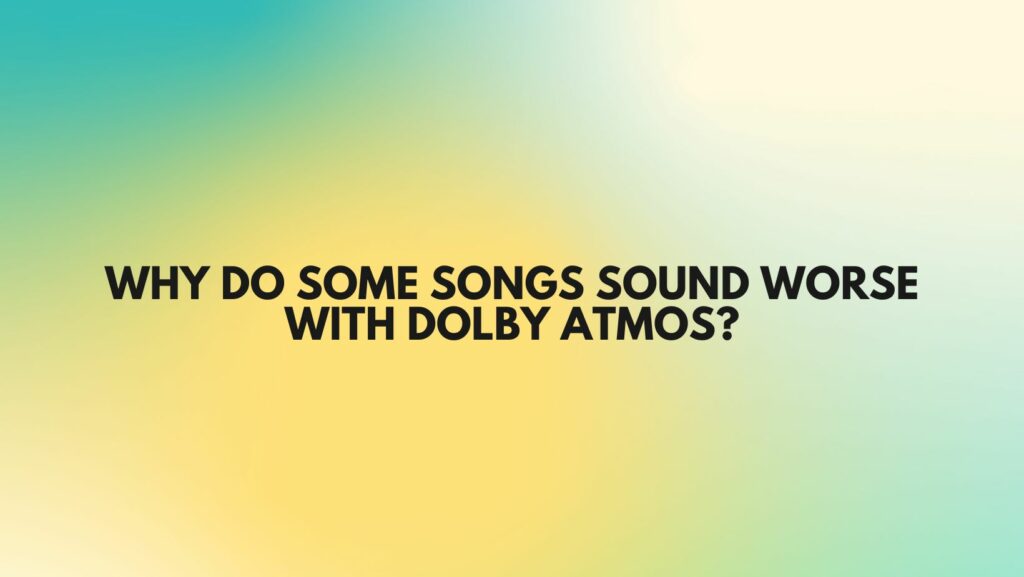In the realm of audio innovation, Dolby Atmos stands as a beacon of transformative technology, promising an enriched and immersive auditory experience. However, an intriguing aspect emerges as listeners explore this three-dimensional audio landscape: Why do some songs sound worse with Dolby Atmos? This exploration aims to unravel the complexities and considerations that contribute to the varied impact of Dolby Atmos on different musical compositions.
The Intricacies of Dolby Atmos Integration:
Dolby Atmos, designed to elevate audio experiences, introduces a layer of complexity that may not uniformly enhance every song. The reasons behind why certain songs may not seamlessly translate to Dolby Atmos involve a combination of musical characteristics, production nuances, and the technology’s distinctive spatial effects.
- Original Mixing and Mastering:
Songs that were not originally mixed or mastered with Dolby Atmos in mind may face challenges when adapted to this three-dimensional audio format. Traditional stereo or surround sound mixes may not seamlessly translate to the height channels introduced by Dolby Atmos, potentially resulting in a disjointed or less cohesive soundstage.
- Overemphasis on Specific Elements:
Dolby Atmos, with its spatial effects and precise placement of sounds, can sometimes overemphasize certain elements within a song. If the original mix did not account for the heightened realism and precision offered by Dolby Atmos, some elements may become disproportionately pronounced, leading to an unbalanced or less enjoyable listening experience.
- Incompatibility with Genre Characteristics:
Different musical genres exhibit unique characteristics, and not all genres seamlessly integrate with the spatial effects of Dolby Atmos. While some genres, such as orchestral or ambient music, may naturally benefit from the immersive capabilities of Dolby Atmos, others, like lo-fi or minimalist genres, may struggle to adapt, potentially resulting in a less favorable rendition.
- Listener Preferences:
The subjective nature of music perception plays a pivotal role in the appreciation of Dolby Atmos. Some listeners may find that their personal preferences align more with the simplicity and familiarity of traditional stereo setups, making the transition to Dolby Atmos less appealing for certain songs.
Real-World Considerations:
- Limited Content Optimization:
The availability of Dolby Atmos-optimized content, especially in the early stages of its integration, may be limited. Songs that have not undergone the meticulous process of Dolby Atmos remixing or remastering may not unlock the full potential of the technology, leading to a suboptimal listening experience.
- Room Acoustics and Setup:
The effectiveness of Dolby Atmos is also influenced by room acoustics and speaker setup. In environments that are not conducive to the recommended speaker placement or lack reflective surfaces, the spatial effects of Dolby Atmos may not be fully realized, potentially affecting the quality of the listening experience.
Conclusion:
While Dolby Atmos has the potential to elevate the auditory experience, the nuances of individual songs and the intricacies of their original mixes play a pivotal role in determining how well they adapt to this three-dimensional audio format. The impact of Dolby Atmos on songs is multifaceted, influenced by factors ranging from the song’s genre to the listener’s personal preferences. As the technology continues to evolve, so too will the strategies employed to optimize a broader range of songs for Dolby Atmos, offering a more consistent and compelling audio experience across diverse musical landscapes.


